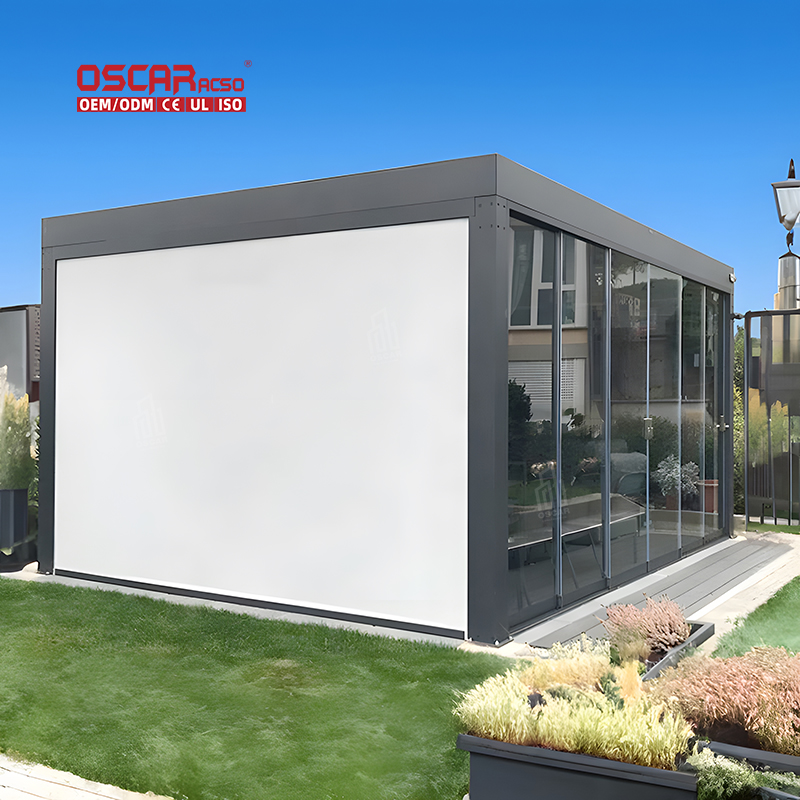Pergola\’s Ancient Roots, Tracing the Journey from Egyptian Gardens to Modern Backyards
Ever gazed at a garden pergola and wondered about its incredible journey through time? 🤔 This iconic structure, more...
Ever gazed at a garden pergola and wondered about its incredible journey through time? 🤔 This iconic structure, more than just a support for climbing plants, boasts a rich history that spans millennia and civilizations. Let’s unravel its fascinating origins together.
.jpg)
What Exactly Is a Pergola?
A pergola is an outdoor architectural feature, typically consisting of vertical posts or columns that support cross-beams and a sturdy open lattice. 🌿 Unlike a solid roof, this open framework allows sunlight and rain to filter through, creating a dappled shade perfect for climbing plants like vines, roses, and wisteria. It’s designed to define a space, provide partial shelter, and add vertical interest to a garden.
The Linguistic Roots: From Latin to Your Backyard
The word’s journey is a tale in itself. It originates from the Latin word “pergula”, which referred to a projecting roof or a porch. This evolved into the Italian “pergola” around the mid-17th century, entering the English language by the 1670s. This linguistic path mirrors the structure’s physical evolution, moving from attached porches to the freestanding garden elements we know today.
A Walk Through Time: The Historical Evolution 🌍
The pergola’s concept is ancient, with its roots buried deep in the sands of time.
- •
Ancient Egypt: Evidence suggests that Egyptians used vine-covered wooden structures to provide shade in their gardens and courtyards over 4000 years ago. These were likely early forms of pergolas, designed to create cool, relaxing areas for the elite in the intense sun.
- •
Ancient Rome & Greece: Pergolas became a common feature in wealthy Roman villas and public gardens. They were used to support climbing plants like grapevines, create shaded walkways, and add beauty to courtyards. The Romans, in particular, embraced the Latin ‘pergula’ as a projecting eave or arbor.
- •
Renaissance Revival: The idea was magnificently revived during the Italian Renaissance, becoming a central and ornate feature in formal gardens. Grand estates in Florence and Venice built stone-columned pergolas covered in roses or vines, integrating them into pathways to showcase luxury and control over nature.

- •
Global Spread & Modern Adaptation: From Europe, the pergola spread across the world, evolving continuously. The 19th century saw its popularity soar in English garden styles, and today, it incorporates modern materials like aluminum and smart automation, blending ancient charm with contemporary engineering.
More Than Just a Pretty Face: The Functional Beauty
.jpg)
Why has the pergola remained so popular for centuries? Its genius lies in its dual purpose.
- •
Practical Utility: It provides shade and shelter from the sun, defines pathways or seating areas, and supports plant life, enhancing a garden’s biodiversity.
- •
Aesthetic Appeal: It adds vertical structure, creates captivating light patterns, and serves as a stunning focal point. When adorned with climbing plants, it blends architecture with nature seamlessly. 🌸
Pergola vs. Its Lookalikes: Clearing the Confusion
It’s easy to mix up garden structures. Here’s a quick guide:
- •
Pergola: Open roof, primarily provides partial shade and plant support.
- •
Gazebo: A fully roofed, often enclosed structure designed as a destination for seating, offering full protection from rain and sun.
- •
Arbor: Typically a smaller, arched structure, often used as an entrance or accent piece.
- •
Trellis: A lightweight, flat lattice panel used primarily as a support for plants on walls or fences.
.jpg)
The Pergola in the Modern World
Today, the pergola has transcended its traditional role. It’s a versatile element in:
- •
Urban Gardens: Creating green oases on rooftops and balconies.
- •
Outdoor Living Rooms: Equipped with lighting, fans, and even retractable shades for ultimate comfort.
- •
Commercial Spaces: Enhancing restaurants, parks, and wineries with its charm.
.jpg)
Its adaptability proves that good design is timeless, continuously evolving to meet modern needs while retaining its core character.
My Personal Take: The Enduring Magic of the Pergola
In my view, the pergola’s lasting appeal isn’t just about shade or style. It’s about the experience it creates—a defined, intimate space that encourages you to slow down, relax, and connect with nature. It’s a framework for memories, from morning coffee under flowering vines to evening gatherings strung with lights. ✨ It represents a perfect marriage between human ingenuity and the natural world, a testament to how a simple structure can profoundly enhance our daily lives.

